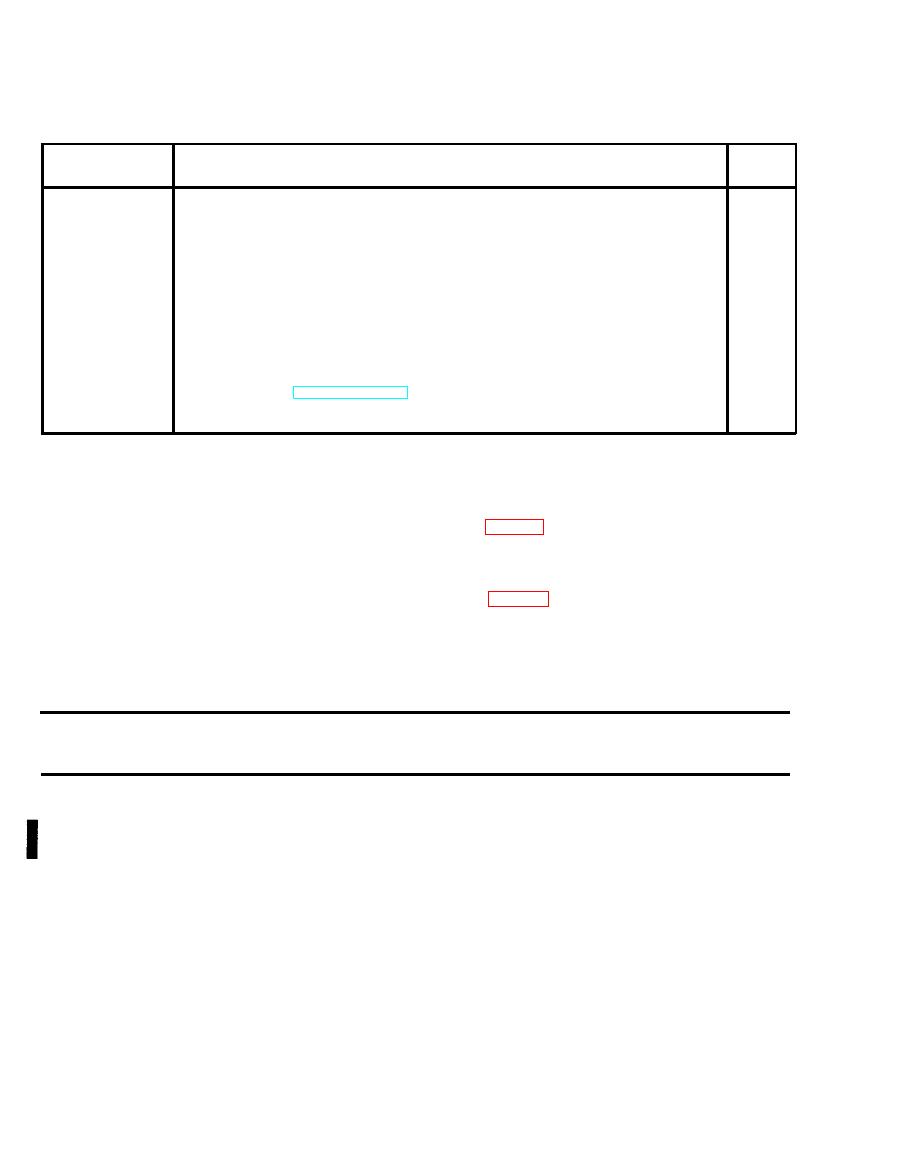 |
|||
|
|
|||
|
|
|||
| ||||||||||
|
|
 TM 5-4320-273-14
Table 41. Organizational Preventive Maintenance
Q - Quarterly
Checks and Services Continued
Total manhours required: 10.0
ITEM TO BE INSPECTED
SEQUENCE
U/M
NUMBER
PROCEDURE
NUMBER
22
MAGNETO
0.5
Check breaker point opening. It must be -015 inch (0.03 cm). Replace burned points
and adjust point gap.
23
OIL PRESSURE SWITCH
0.3
Check for damage. Make sure switch spring clip disengages at engine startup and that
switch trips at engine shutdown. Replace faulty switch.
FIRE EXTINGUISHER
24
Inspect for full charge, proper working condition, and secure mounting. Replace if
0.2
gage indicates low charge.
25
FRAME ASSEMBLY
Check condition of frame and stowage boxes and for missing reflectors and data plates.
0.4
26
WHEEL ASSEMBLY
0.5
Clean and check for damage. Ensure that wheel bearings have been lubricated in
accordance with LO 5-4320-272-12. Adjust the wheel bearings.
27
ENGINE COMPRESSION
Check the engine compression.
1.0
Section VI. TROUBLESHOOTING
4-ll. General
c. Only those functions within the scope of organiza-
tional maintenance are listed For trouble shooting
a. This section contains troubleshooting information
procedure within the scope of operator/crew maintenance,
refer to table 32.
which are the responsibility of organizational maintenance.
Each malfunction for an individual component, unit, or sys-
4-12. Organizational Maintenance Troubleshooting
tem is followed by a list of tests or inspections which will
Chart.
help you to determine probable causes and corrective actions
to take. Perform the tests/inspections and corrective actions
in the order listed.
the organizational maintenance level
b. This manual cannot list all malfunctions that may
NOTE
occur, nor all tests or inspections and corrective actions. If a
malfunction is not listed or is not corrected by listed correc-
Before you use this table, be sure you have per-
tive actions, notify your supervisor.
formed all applicable operating checks.
Table 4-2. Troubleshooting
MALFUNCTION
TEST OR INSPECTION
CORRECTIVE ACTION
ENGINE
1. ENGINE FAILS TO CRANK WHEN STARTING BUTTON IS DEPRESSED.
NOTE
distilled water or a good grade drinking water (excluding mineral water).
Use
Step 1. Check for weak or dead battery with a hydrometer. Hydrometer reading should be at least 1.250 or higher at 75 F
(23.8C). Service battery by removing caps and checking the electrolyte level in each cell. If low, fill to level of
3/8 inch (0.93 cm) above plates with distilled water.
WARNING
Do not smoke or use an open flame in the vicinity when servicing the battery. Batteries generate hydrogen gas,
which is highly explosive. Charge the battery using a constant current charger. Check the specific gravity of the
electrolyte every 30 minutes. The battery is fully charged when you get a constant reading for three 30 minute
intervals.
CAUTION
Constant current battery charging is always preferred. If you must use a constant-potential charger, battery tem-
peratures must be maintained at less than 130F (54.4C) by interrupting the charging procedure as this
temperature is approached.
Change 4
|
|
Privacy Statement - Press Release - Copyright Information. - Contact Us |